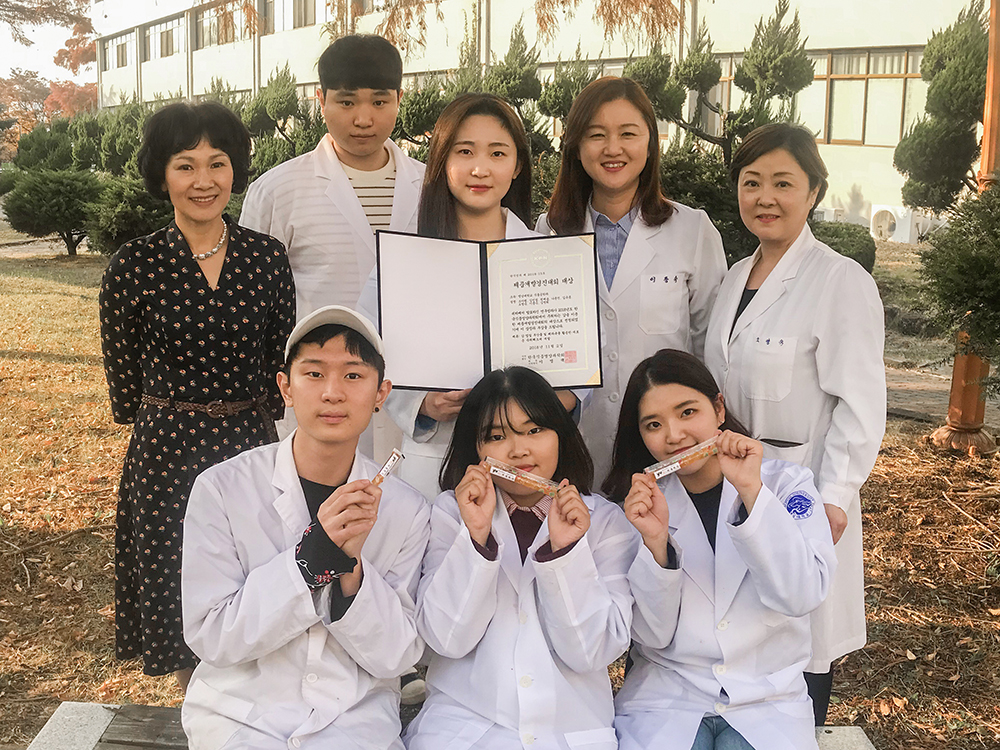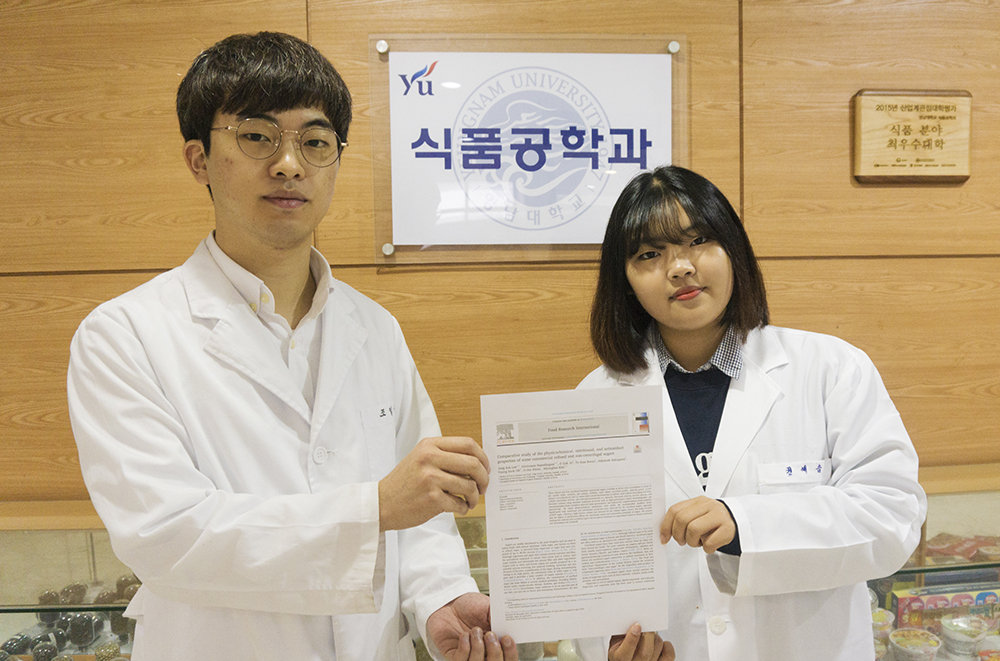Department of Food Science and Technology Develops ‘Hangover Cure Using Persimmon Skin’ N
No.89109- Writer pr
- Date : 2018.11.28 13:20
- Views : 8091
Add high value to persimmon peels, while also lowering waste fruits
Joint research of professor, graduate school and undergraduate school students... Strong research capacities with good fundamentals from undergraduate studies
[November 20, 2018]

<Department of Food Science and Technology Sul! Ggae-bol-tae-gam team that won the grand prize at the Korean Society of Food Science and Nutrition’s product development contest>
(top row, left to right: Department of Food Science and Technology Dean Kim Myung-hee, Kim Min-seop, Cho A-ryeon, Taegu Science University Department of Food Nutrition and Cooking Professor Lee Jong-sook, YU Department of Food Science and Technology Professor Oh Young-sook, bottom row left to right: Kim Yu-jong, Kwon Ye-som, Na Yun-jin)
This product that they developed received the grand prize at the Korean Society of Food Science and Nutrition’s product development contest that was held on October 31. The winners of this prize were Cho A-ryeon (24) currently in her master’s degree program at YU (major in food engineering) and senior Kwon Ye-som (23), juniors Kim Min-seop (23) and Na Yun-jin (22), and sophomore Kim Yu-jong (21) of the ‘Sul! Ggae-bol-tae-gam’ team. YU Department of Food Science and Technology Dean Kim Myung-hee and Dr. Oh Young-sook, and Taegu Science University Department of Food Nutrition and Cooking Professor Lee Jong-sook served as co-advisors.
This contest, which was co-hosted by the National Food Engineering Professor Association and the Korean Society of Food Science and Nutrition and sponsored by Nature Farm and the Yeongyang Red Pepper Trade Corporation was held to increase consumption of persimmons and red peppers and to find products and commercialization items that could add value to these products. Pre-evaluations and oral presentations were conducted on research creativity, scientific system, correlation to the food industry, and product development completion. In result, the YU ‘Sul! Ggae-bol-tae-gam’ team won the grand prize with the ‘Development of a New Hangover Cure Using Persimmon Skin and Waste Fruits’.
This contest, which was co-hosted by the National Food Engineering Professor Association and the Korean Society of Food Science and Nutrition and sponsored by Nature Farm and the Yeongyang Red Pepper Trade Corporation was held to increase consumption of persimmons and red peppers and to find products and commercialization items that could add value to these products. Pre-evaluations and oral presentations were conducted on research creativity, scientific system, correlation to the food industry, and product development completion. In result, the YU ‘Sul! Ggae-bol-tae-gam’ team won the grand prize with the ‘Development of a New Hangover Cure Using Persimmon Skin and Waste Fruits’.
Dean Kim Myung-hee who acted as an advisor for the students said, “While thinking about ways to help relieve hangovers for modern people who drink frequently and based on the research results that polyphenol and antioxidizing materials that are rich in persimmon help decompose alcohol, we evaluated the biological activity per pre-treatment method of persimmon skin and evaluated the blood alcohol decomposition abilities after drinking to develop an easy-to-eat jelly-type hangover cure.” She added, “I think that adding value to the byproducts when processing persimmon and the environmental benefits of reducing waste fruits received good evaluations.”

Dean Kim Myung-hee said, “There is a synergy effect through joint research of professors, graduate school students and undergraduate students, and the research capacities gained in undergraduate school naturally continued to the graduate school course.” She added, “I will help the undergraduate students create good research outcomes by helping them participate actively in club and research activities.”